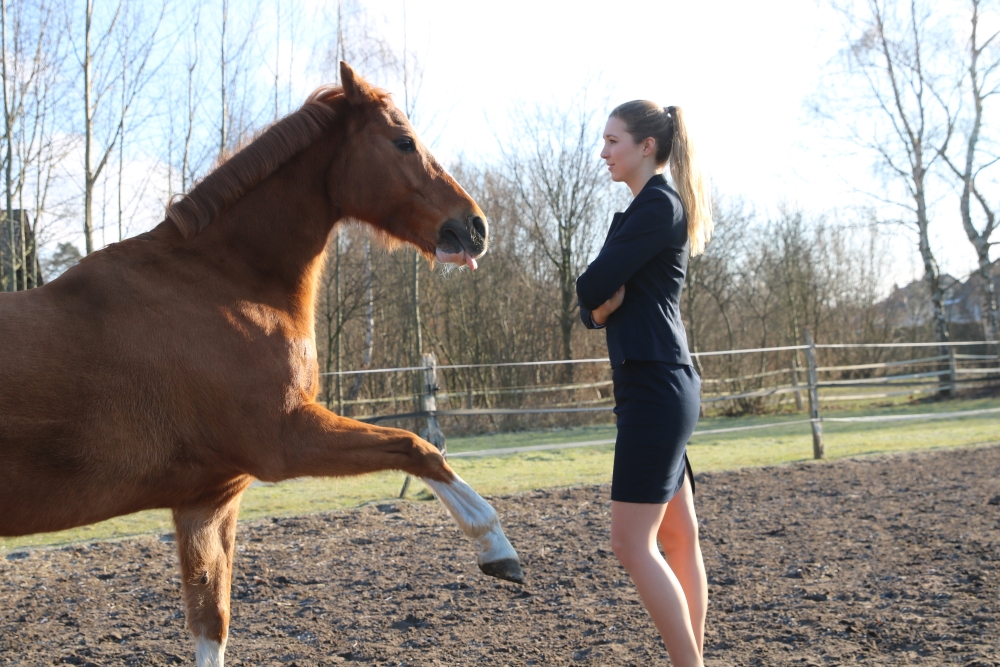Horses have a wholly different mode of communication. They do not use sounds, like human beings do. When horses communicate, it is not so much interacting as reacting to signals they receive via body language. You could say they mirror our own behavior, giving a clear, direct and nonjudgmental response to how we lead. As gregarious animals, horses must trust their herd leader and its leadership competence. Each and every animal in the herd will test the leader’s skills, every-ready to assume command, should the leader falter. Thus, in coaching with horses, we receive genuine feedback on how our body language speaks to others. Are we natural leaders, radiating authority? Or is our demeanor completely lacking in conviction and credibility? Do my employees rebel against my tyrannical disposition, following my instructions with mutinous reluctance? Or do they nod and carry on, not taking me seriously at all?
Applying a series of ground exercises, horses reveal to leaders just how congruent their actions are with their intentions. Posing and play-acting leader won’t get you anywhere with your horse coach. Only authentic, respectful comportment will earn you positive responses. And these responses – whether positive or negative — can be directly transferred onto your daily professional life.
What may sound theoretical and impractical for everyday use, can be proven with simple ground exercises. Here’s an example: In a ring of approximately 15 meters in diameter, you are given a whip. Your task is to have the horse circle around you, without touching it with the whip. Sound easy? Well, there may be hitch or two. Although horses are naturally inclined to flee danger, our domesticated animals have learned that neither we nor the whip are particularly awe-inspiring. It is just as likely that the horse will show both its backside. Or it will simply plant itself, not budging an inch. Or, it may grant you a pace or two, stop, move, stop, move. How this exercise is approached depends on a leader’s (your) personality, which also determines how you react to the horse’s behavior. Do you find yourself standing helplessly in the center of the ring, awkwardly holding the whip without the slightest clue as to how to get this animal to move? Can you coax the beast to walk a few feet before it stops again, wondering what you want? Such leaders lack a natural leadership demeanor. They have no clear image of their objective. This could stem from low self-esteem or from work overload. Then there’s the opposite approach: A leader who is determined to appear self-confident and tall in the saddle. This leader literally tries to take the horse by storm, wildly wielding the whip, demanding obedience per force of will. What may appear to be authoritative self-assurance is far from it. Does this leader always approach employees with massive pressure, demanding immediate and absolute submission? Does such a leader impatiently tyrannize co-workers, inspiring fear instead of respect?
Natural leadership behavior can be learned. The most crucial factor is empathy. In horse-assisted coaching, although you may see your coach as ‘simply’ an animal, it is nonetheless a sentient being. And all sentient beings must be approached with respect if you hope to win their trust. No one, whether on two-legs or four, gladly works under pressure and coercion. Poised, respectful and radiating calm, with a clear view of what you want to achieve – these are the qualities to which the horse will willingly and positively respond, and your employees will, too. If you, as a leader, have the objective mapped out in your mind, you will be respected by all sentient creatures. Confidence, empathy and clearly defined goals add up to successful leadership. We certainly can learn a lot from horses.



